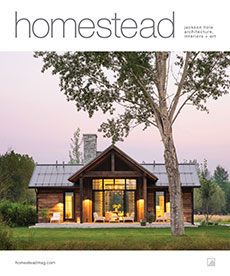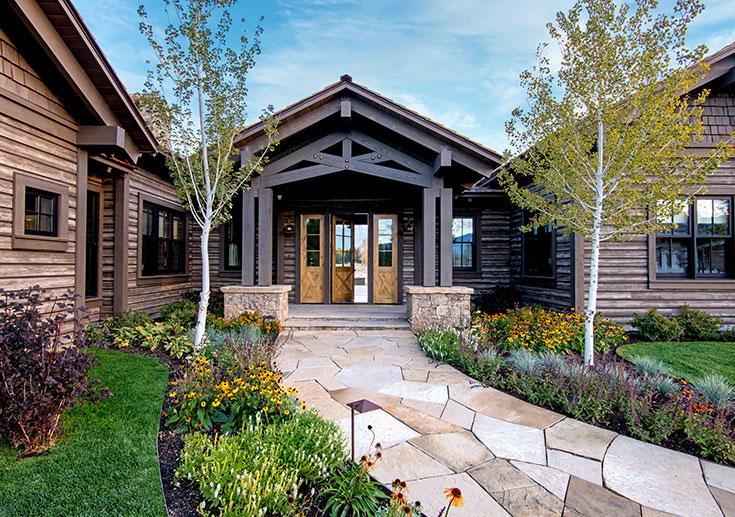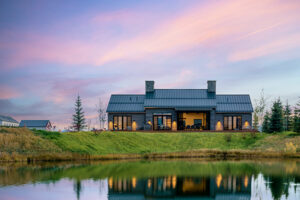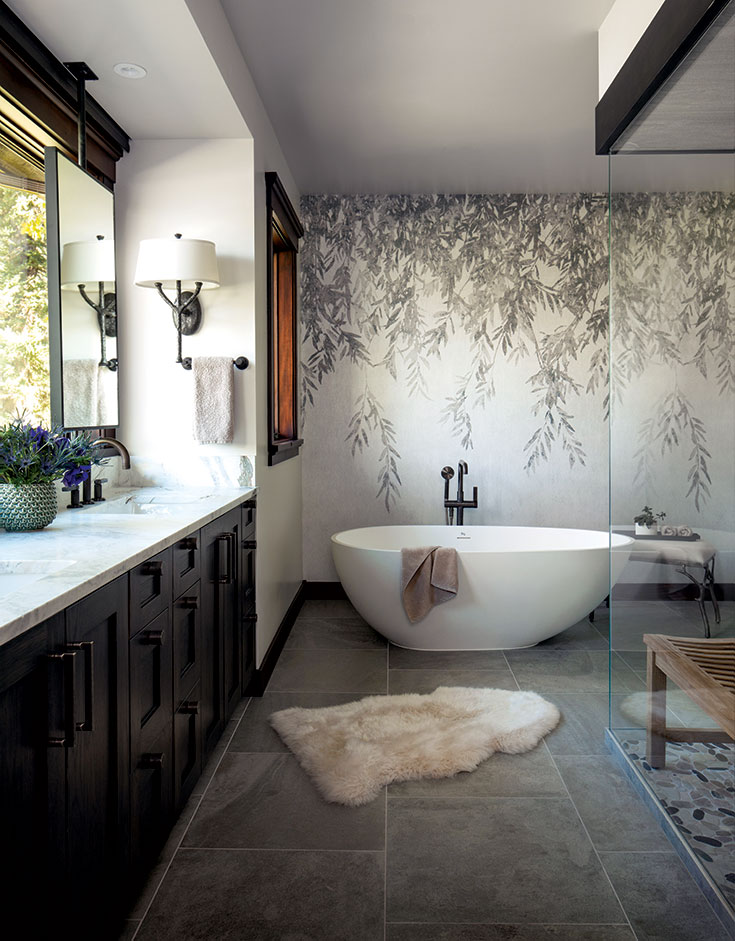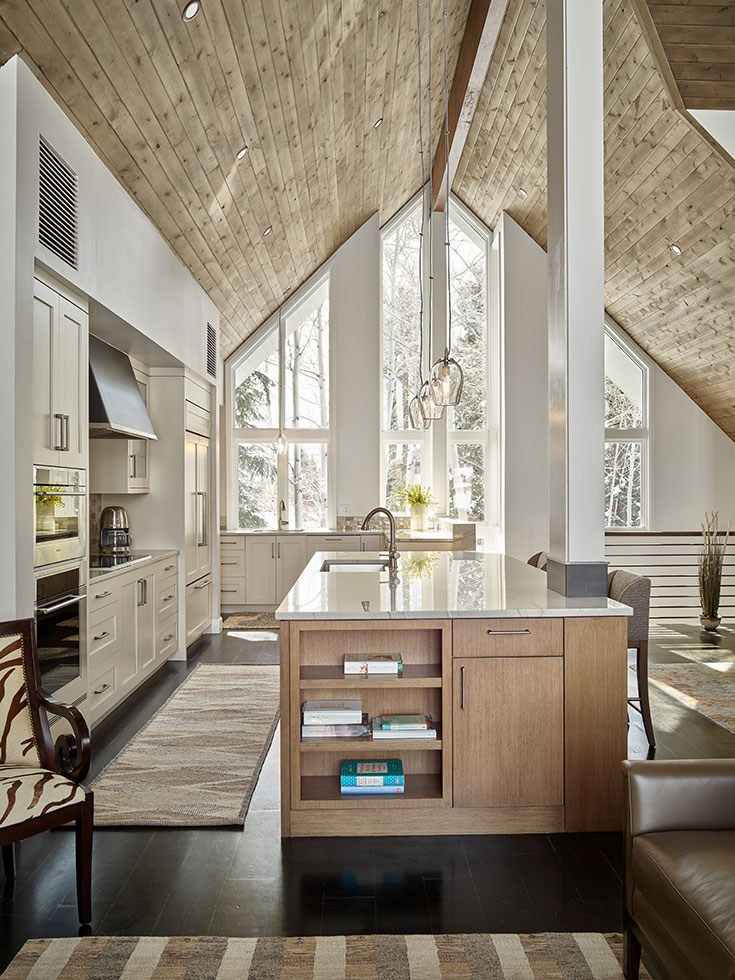WATER FEATURES ADD TO A HOME, AND THEY CAN IMPROVE YOUR WELL-BEING.
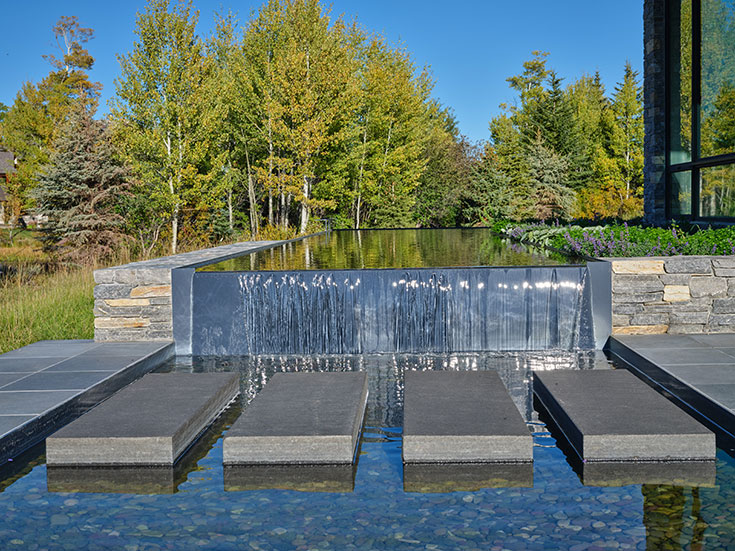
Story
HOMESTEAD TEAM
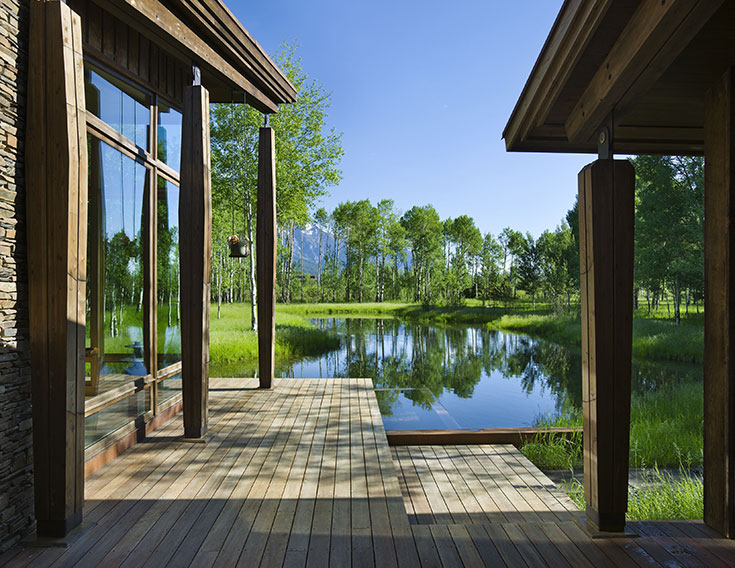
According to recent research, this isn’t surprising. A 2019 study from the American Association for the Advancement of Science published in the journal Science found that simply looking at a water feature improves a person’s mental health and well-being. A Psychology Today review released the same year as the Science paper looked at almost 40 recent studies about water features and found that water features reduced stress and lowered the risk for depression. “Water features can be amazing additions to a property, and to the
lives of homeowners,” says landscape architect Hans Flinch, who founded Jackson-based Cairn Landscape Architects in 2020. “There’s something about the addition of water to a wild landscape—it’s unmatched.”
But water features should not be done on a whim. “We get a lot of clients initially requesting them without fully understanding what they entail, especially in a climate with the extremes that ours has,” Flinch says. “Other than a custom pool or spa, a water feature is one of the more expensive pieces you can add per square foot to a landscape. They are complicated.” And they require maintenance.

“It depends on the water feature, but having someone check on it once a week—just like you’d have someone mow the lawn once a week—wouldn’t be unusual,” says Case Brown of Clearwater Restoration, a Jackson-based company specializing in keeping water features happy and healthy. “The amount of maintenance a water feature will require should be something that is talked about from the earliest planning and design stages. It is possible to design and build them in a way that helps limit maintenance. But then there is always the chance that the crew mowing the lawn blows the grass clippings into the water feature, and it could literally turn green overnight and take weeks to fix.”
Homeowners looking to include a water feature in a new build—or those looking to include a water feature during a landscape remodel—can do several things to make the design process and the end result efficient. “Mention that you’re interested in a water feature at the beginning of the design process,” Flinch says. “And have a conversation about cost and maintenance as early as possible; ask how much it will cost to build and maintain and what the ongoing operational costs are going to be.”
If you bring a water feature into the design process early enough, it’s possible to make it more than a decorative feature. Ward | Blake Architects has done homes near Jackson Hole Golf & Tennis Club and off the Village Road that are heated and cooled with the help of water features. “The groundwater in the Teton County aquifer is warm enough and flows at the same temperature yearround,” says one of the firm’s founding principles, Tom Ward. “Water can come out of the ground, go into a heat exchange, and then it’s ready to help heat a house. After it’s finished in the house, it’s ideal for injecting back into a water feature because it’s cool and won’t promote growth of organic matter. It sounds tricky, but it isn’t.”

Flinch says homeowners who aspire to have a water feature should also consider what it might look like in the spring and fall, when it’s empty of water and not covered by snow. “A dried-up lake doesn’t look great,” Ward says. Flinch says smart landscaping can help with this, but there will be months when ponds are empty.
There’s something about the addition of water to a wild landscape—it’s unmatched.
— Hans Flinch, landscape architect
Still, many Jackson Hole homeowners have decided that water features are worth the cost and work. Most properties in John Dodge, Tucker Ranch, Crescent H, Vogel Hill, and Bar B Bar Ranch—among the most exclusive neighborhoods in the valley—have some sort of water feature, or features. “Water gives a house a dynamic personality that isn’t really achievable without the use of water,” Ward says.
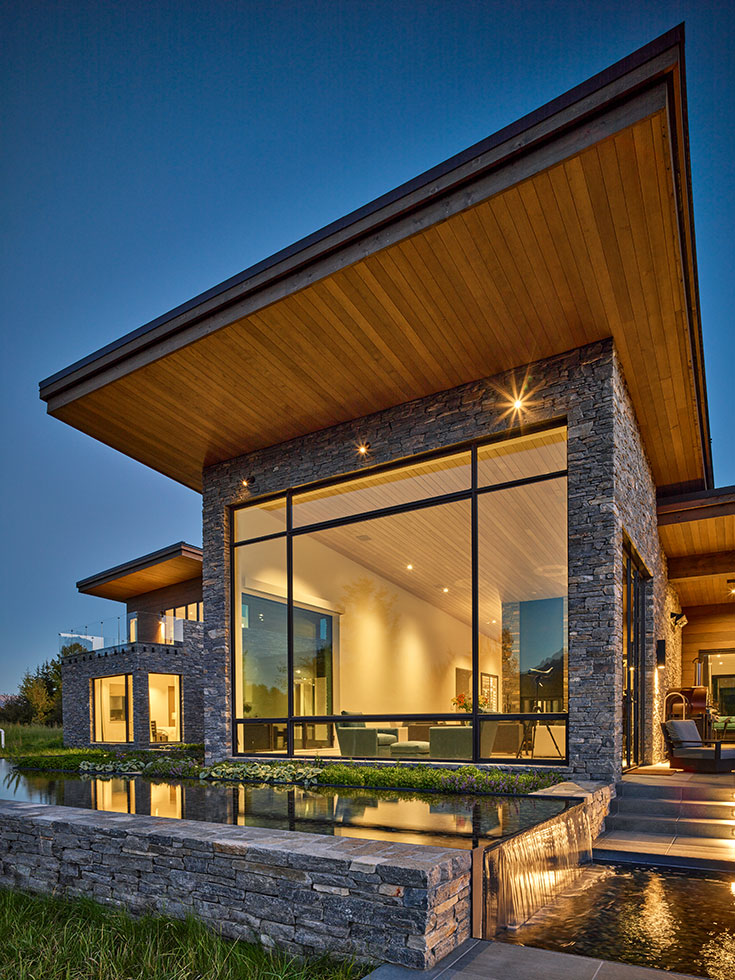
“To me, a water feature can be anything from a natural recirculating stream to a pond to a steel reflecting pool,” Brown says. “Water features are not only designed for specific clients, but also specific sites. Every site is different.” Proving that there is a water feature for every site, at the time he was interviewed for this story, Brown was working on a “weeping rock” to put on a second story outdoor terrace. “Water features are really varied and depend on a project’s goals,” Flinch says. “It can be everything from a small focal feature with a very calming, serene effect in a meditative space to clients wanting to hear the sound of a stream rushing by from their kitchen or bedroom.”

REGULATIONS
Teton County’s regulations about water features are very specific, and often change. “A lot of the projects I show on my website can’t be done anymore,” Brown says. Mitch Blake, a principal at Ward | Blake Architects, says, “We’ve been doing ponds and water features for 25 years, and it is interesting how the county regulations have changed over time.” Generally Teton County regulations about water features have been moving in a direction that encourages wildlife to stay away from homes rather than enticing them closer in with a pond just outside the great room window. (For 11 months, from October 2017 into August 2018, the Teton County Board of County Commissioners had a complete ban on the building of new ponds and berms as it worked with consultants to develop regulations that offered greater environmental protections for water quality and wildlife.) “Also Three Creek has different rules for water features than Tucker Ranch,” Brown says. “People are often surprised by the county’s and their subdivision’s development rules and regulations. The sooner you start thinking about a water feature, the sooner a landscape architect can start looking into what is possible for you.”
Ward | Blake Architects worked with clients who have a home off Teton Village Road to design multiple interconnected water features. “Water is sourced from the front of the house and, through gravity and a slight gradient, flows west toward a hot tub, where it creates an island on which the hot tub resides,” Ward explains. “From there, the water wraps around the patio until it ultimately flows into the pond via a sluiceway built on top of the grade.” Ward says these not only add visual interest, but also mask the noise of traffic on the Village Road. “On an otherwise quiet summer day, you could hear a surprising amount of traffic,” he says. “But since the water feature came online, all you can hear is water.” (The sluiceway has wood slats on its bottom. These create turbulence, which makes the sound of the water flowing through it louder.)
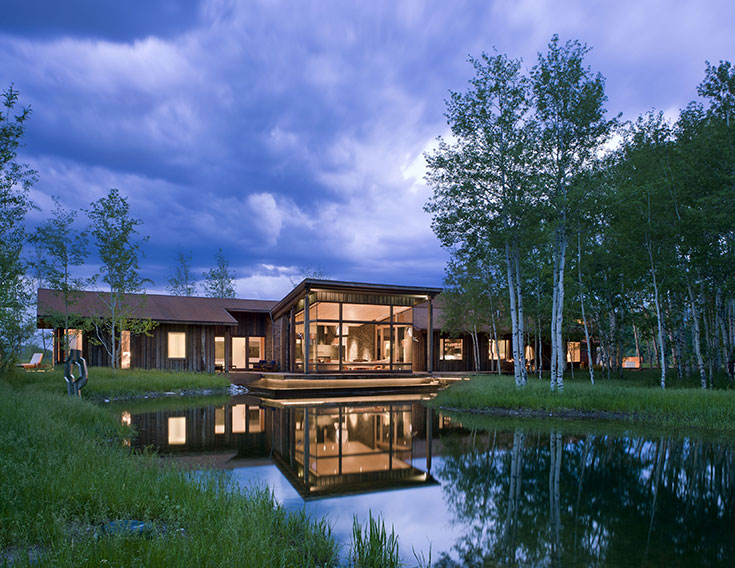
Architect Flinch worked on the landscaping design for a Stephen Dyniadesigned home. “It was this beautiful L-shaped home centered around a courtyard,” he says. “The courtyard screamed for something special.” The “something special” ended up being a linear, shallow reflecting pool. “It took us a while to figure out what the courtyard needed, but once the owners expressed an interest in a water feature, it was obvious that was the right move,” Flinch says. “There’s something that water adds to a house that nothing else can.”
